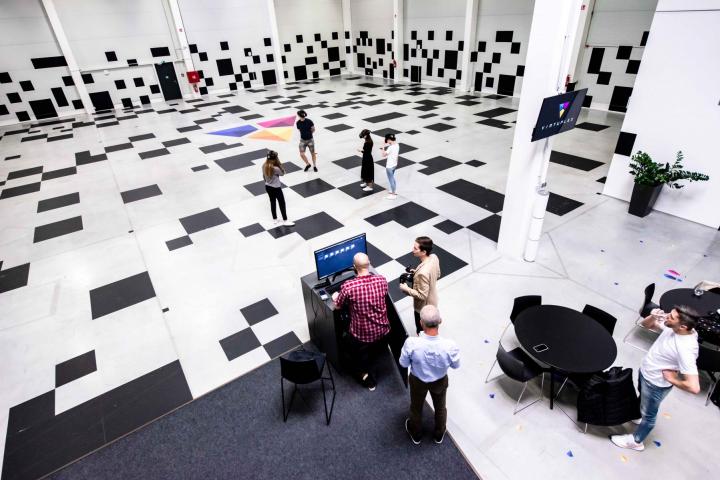
Students of the Architecture and Civil Engineering programme at the Faculty of Civil Engineering of the CTU are trying out a new way of designing in the Wearrecho programme. This opportunity has been opened to them thanks to the cooperation of the Department of Architecture of the Faculty of Civil Engineering of CTU with the MS architects studio, which develops Wearrecho together with the programmers of Studio 301. The resulting student work helps the developers to test and further develop the new program.
"This is a working beta-version of the software module that we received for testing. Last winter semester, a selected group of students designed the regeneration of the Dejvice academic district in virtual reality. In the summer semester, the students have already prepared their final bachelor theses in it, here it was the design of houses. In the current academic year, we are continuing to teach in this software," says Prof. Michal Šourek from the Department of Architecture at the Faculty of Civil Engineering, who was behind the launch of Wearrecho and leads student work in it within his teaching studio.
The results of the work with Wearrecho can be studied by students and their teachers from the Faculty of Civil Engineering of CTU in the Virtuplex studio in Horní Počernice, Prague. It is a unique presentation space of 600 square meters. "After converting the architectural design into virtual reality, this space allows us to walk through the projects - the architecture that has not yet been built. It turns out that physical movement is even more important for the authentic perception of architecture, its understanding and grasp, than we had previously thought," says Prof. Michal Šourek. He adds that even an experienced professional can sometimes be surprised by the reality of what he has imagined and drawn.
Although the faculty students normally work with structural design software, they are glad for the new experience with virtual reality. Bc. Martin Kříž, a first-semester student in the Master's degree programme in Architecture and Civil Engineering, who prepared his bachelor's thesis in Wearrecho, says: "When working with classical design software, I can see the structure, the mass, some form of visualisation. However, you can never fully capture all the details, the context, or the overall feeling of the architecture on paper or on a monitor. But in Wearrecho I can now move completely freely in space, I can feel the space, I can check 'on the spot' whether everything is as I originally imagined it. I can see the model around me as if it were real. I can design immediately and intuitively. In practice, when I present my design to the client, I won't have to explain things at length, I'll just 'take him for a presentation walk'."
Prof. Mikuláš Hulec, Head of the Department of Architecture at the Faculty of Civil Engineering, confirms the positive experience with the new technology: "The results of the students' work are clearly better. Their motivation certainly played a role, but the influence of the new technology is undeniable."
Teaching using Wearrecho continues in the current academic year in the profile subjects of studio teaching. MS Architects and Studio 301 are already working on the upcoming, more advanced version of the tool, which will again be available to students free of charge based on the developers' partnership with the Faculty of Civil Engineering of the Czech Technical University in Prague. This is unique in Europe in the field of architecture education. "In the field of architectural design, tools for presenting designs in virtual reality are not a complete novelty, there is also elementary object interactivity, but the full creative interactivity of Wearrecho is unique, and the application of this technology in the teaching of architecture in an academic environment is also pioneering. Crucially, designing in virtual reality does not replace creativity with productivity or stifle creativity in the way that working with conventional design software tools does. On the contrary, it allows creativity to be unleashed, to be freed from the constraints of the two-dimensional environment that has so far been the only one available to architects - when drawing with a pencil as well as when working on a computer," says Prof. Michal Šourek from the Faculty of Civil Engineering of the Czech Technical University.
Design showcase with Wearrecho: https://www.youtube.com/watch?v=AW44zhZdEKc
Interview with prof. Michalem Šourkem and Bc. Martinem Křížem with Wearrecho presentations:
https://srdcemstavari.cz/vyuka-architektury-ve-virtualni-realite/


